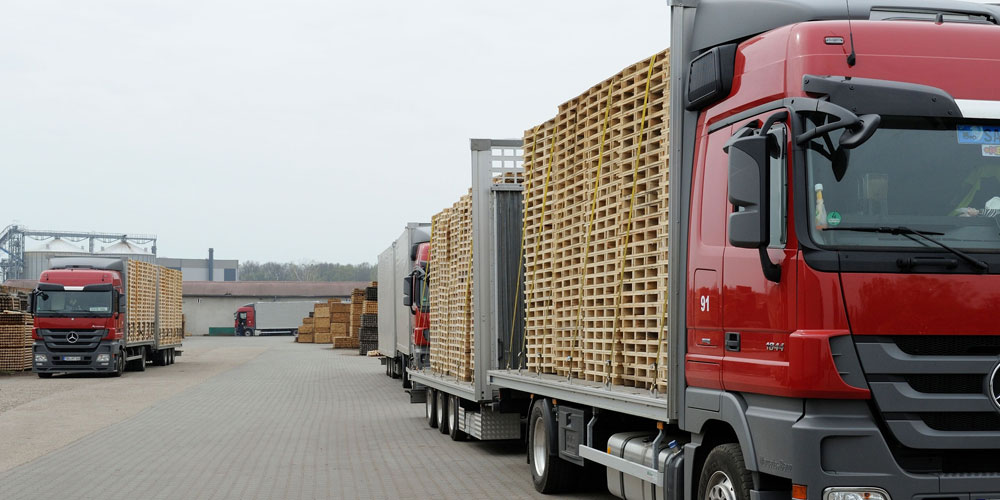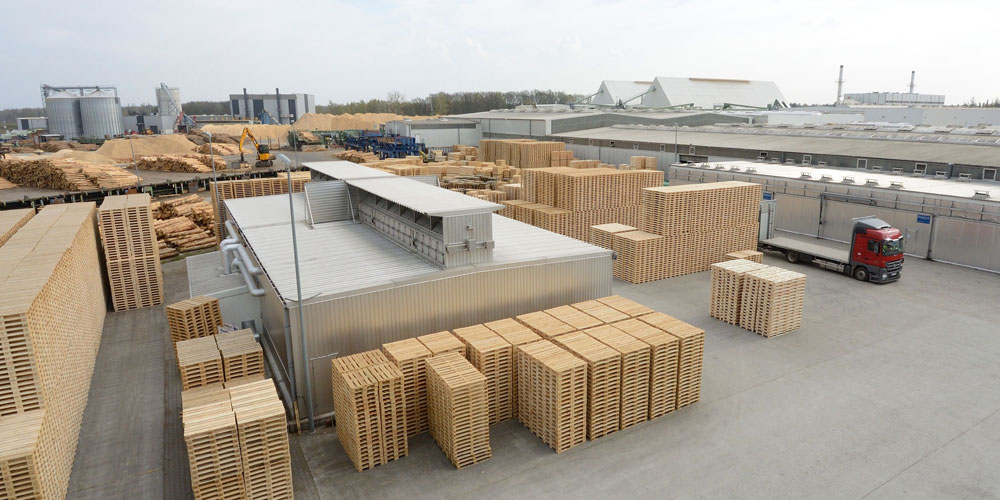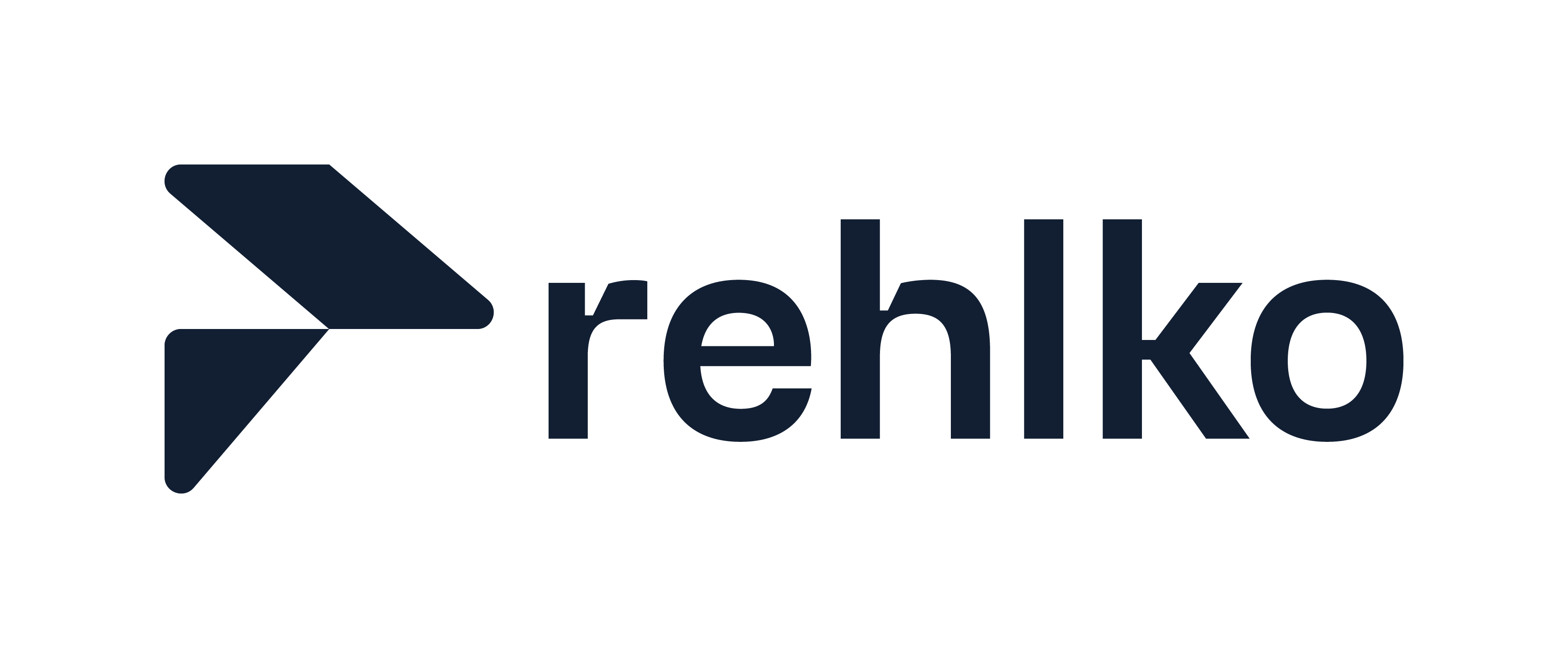
Smartsheet helps HIT Holz increase productivity and capitalise on growing eCommerce trends
HIT Holz deploys Smartsheet to smash goals and establish effective processes to boost efficiency.
"Smartsheet is essential to our work now, and it’s saved us over 1,000 hours so far. We've learned so much since we started using it, not only about how our business works best, but about technology in general."
Program Manager at HIT HOLZ
Founded in 1999, HIT Holz is the largest European manufacturer of Euro pallets, one of the largest sawmill sites in Germany and one of the most important producers of biofuels in Germany with a turnover of more than EUR 200 million. Located in northwestern Saxony in the city of Torgau, they process more than 1.1 million solid cubic metres of wood annually into pallets and other wood products like sawn timber, pellets, and briquettes. These materials are used by thousands of factories all around the world, empowering manufacturers to feel confident in the longevity of their materials.
In recent years, HIT has invested more than 20 million euros in high-tech and fully integrated production processes, after its rapid growth created demand for better infrastructure. These encompass all stages of value creation, from raw wood procurement to the production and delivery of pallets and other wood products. As an organisation with forward-thinking teams, they knew work management was key to the success of these processes and production changes. They looked for software to help boost their efficiency, and Smartsheet soon became a key component of their evolution journey.
An urgent need for an effective system
Capex Manager Thassilo König responded to the call to establish a company-wide project tracking and management system. Until then, strategy development involved putting pen to paper or recording progress on lengthy Excel sheets -- the company didn’t even have a planning system in place.
Their five-person project management team and C-suite wanted an integrated system that could help them direct tasks within the factory -- not just report on its results -- and then add actionable details at the lowest possible level. The system would also need to give them an overview of what was happening within the business, help them assess the duration and budget of ongoing projects and regularly update these figures with the latest information.
It also made use of Dynamic View, a feature that enables the owners of the business to share information with groups of employees. It manages critical processes with vendors and can accommodate both internal and external teams, all while maintaining security and making collaboration simple.
Additionally, HIT was charged with the ambitious task to meet rising demands for global shipping. As eCommerce booms, the company aims to increase its productivity to make these new mass transportation levels achievable, opening up exciting possibilities to make online shopping more accessible and reliable than ever before.
Capacity doubled with help from Smartsheet
König started HIT’s Smartsheet journey with an intake of 200 sub projects on Smartsheet, a number that has almost doubled now. With the help of platinum Smartsheet solutions partner, AMX, he quickly built a dashboard, implemented some standardised tools, and established workflows, which were personalised to the company. And to help the workforce adapt to these new digital changes, König began leading bi-weekly workshops demonstrating how the factory floor can leverage its tools and processes for their projects.
“Sometimes people need a little bit of time to get used to Smartsheet, but the workshops make it easy. Even people with no IT knowledge can use it -- and most people have no problems at all."
- Vlera Hetemi, AMX Solutions Consultant
At HIT, the first applications of Smartsheet assisted procurement, tracking employee requests for laptops, desks, or even machinery. The solution addressed these requests swiftly, moving them through three approval levels and alerting the appropriate team members on time via the use of automation. The effectiveness of this process encouraged HIT to implement new areas of application. As awareness grew, so did its use. A multitude of tasks were migrated to Smartsheet and use cases “exploded” from there, according to Hetemi. She says this is in part due to König’s management and the partnership they were able to build, ensuring a smooth feedback process and resulting in better solutions:
“I really liked how this journey took place -- it was very smooth and things went very fast as a result. Once we discovered a new use case, we would sit together for a couple of hours and then we would build what we needed.”
- Vlera Hetemi, AMX Solutions Consultant
“The AMX sessions have been so useful. It's crazy how fast you can build standardised programs this way. We’re now building a prototype of each question that arises in our company. Although we currently have 40 licences, we’re teaching them how to use [Smartsheet] and it’s multiplying.”
- Thassilo König, Program Manager
Ultimate visibility across complex, ever-evolving project needs
HIT’s project management team now works alongside the workforce, taking precautions against any potential roadblocks and promptly tackling challenges as they come. The Smartsheet Control Center feature allows König and his team to envisage how more complex projects will roll out and manage their various aspects in different categories depending on its supervision requirement.
“It allows us to answer questions like ‘how long does the project take?’, ‘how many weeks will we need to allocate to it’, and ‘how much investment will this project need?’,” he said. It also reduces operational risk, giving HIT the power to standardise project provisioning with automation, thereby making it simple and easy to safeguard the program, while freeing up employee time that would have been spent doing so manually.
HIT HOLZ, a traditional manufacturing company with a forward-thinking project management team focused on digital transformation, initially saw great success using Dynamic View, Control Center and Bridge. Building off that success and eager to continue digitization, HIT HOLZ is the first German customer to turn to Smartsheet Advance Gold to further benefit from the whole platform.
Empowering employee growth
Another way that HIT has leveraged Smartsheet capabilities is within HR, to get to know its staff. With more than 700 employees’ skills, certification and potential to manage, the tool has helped HIT build a conclusive database of who works within the organisation.
In a practical sense, it allows them to identify which foremen can perform specific tasks such as operating heavy machinery, in order for them to comply with laws on licensing and operation. But it also gives them a clear picture of how they can empower growth and innovation within their workforce through training.
Easily adopted
While some employees were initially unfamiliar with cloud-based tools, they were able to get to grips with Smartsheet quickly and easily.
Employees have access to several capabilities through HIT’s dashboard, like editing tasks assigned to them and keeping track of relevant forms. That’s why HIT now has 380 active sub projects.
“Smartsheet is as easy as ordering from Amazon,” König says to hesitant adopters. He said, “We needed a little time getting into Smartsheet, but now, the company’s asking our team to build more workflows. We have moved from a push to demand, and AMX had a big impact on that, because they are teaching the teacher.”
An intuitive set up also means that employees can use it for practical purposes, like submitting an incident report.
Protecting employee safety
With Smartsheet, shop floor management can provide three key areas of detail and a photo to log an incident as soon as it happens. This can be done via iPad, allowing managers to include reporting processes into their daily inspection routine. From there, the relevant department receives a timely alert.
Tracking these incidents is key to creating a safe, compliant working space. Forms like the incident management report have helped determine “…the criticality of this incident, what happened, what is the impact of this event on the company, and what do we have to do to make sure this incident won't happen again,” said König.









